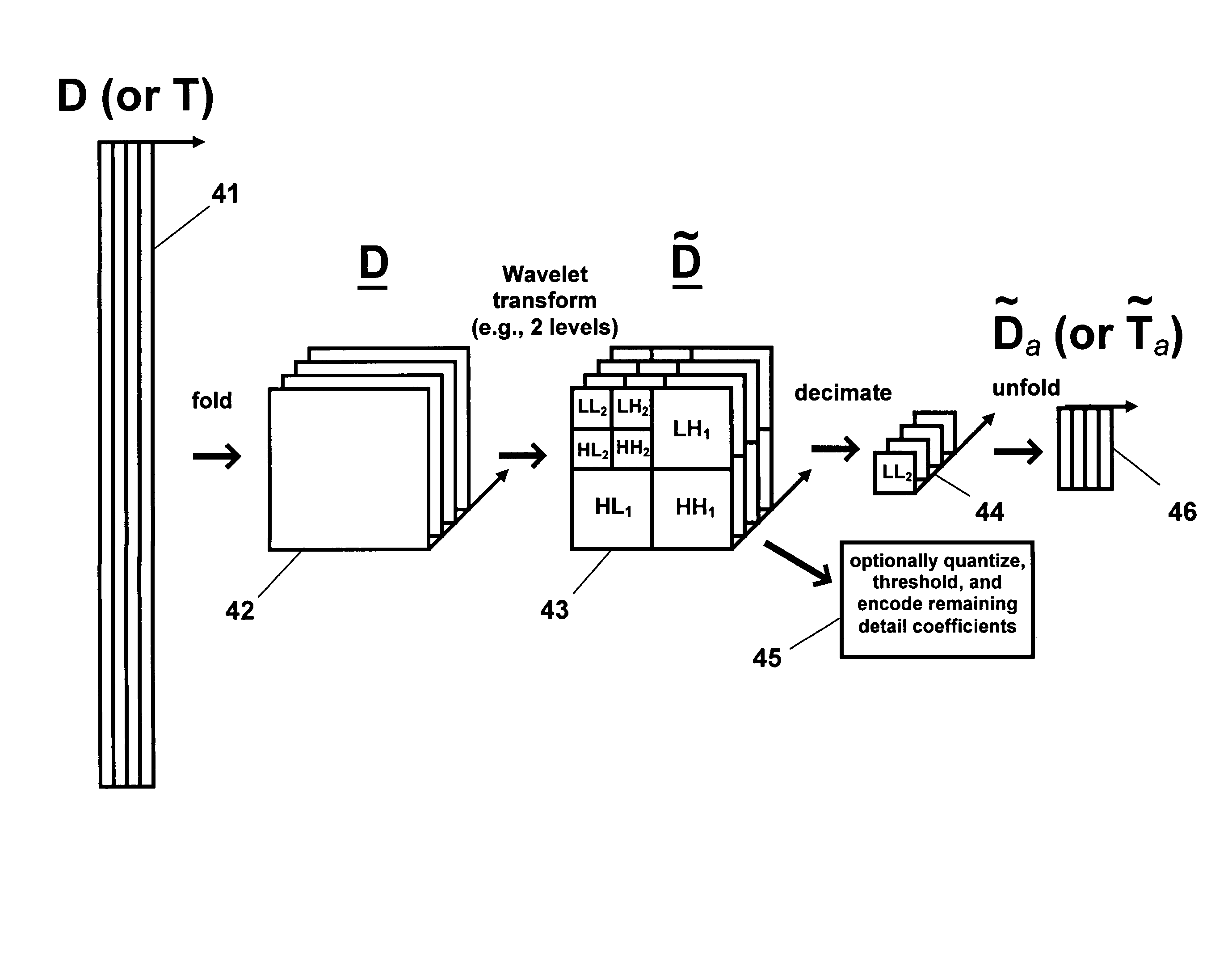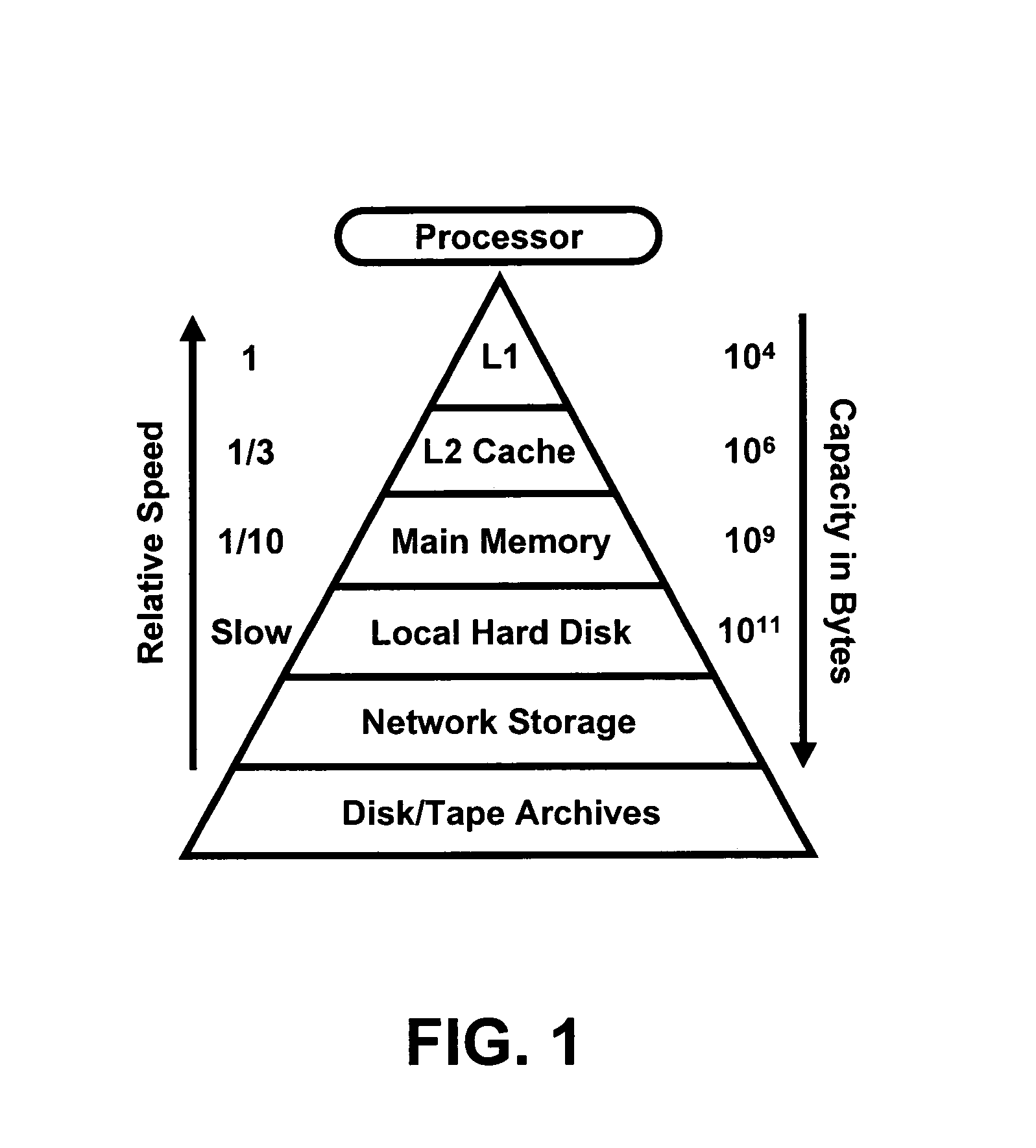Spatial compression algorithm for the analysis of very large multivariate images
a multi-variate image and compression algorithm technology, applied in the field of multi-variate image analysis, can solve the problems of outstriping the computational resources typical to the laboratory, hurdling the computational difficulty of reducing the very large quantities of raw spectral data to meaningful chemical information, and analysis of full spectrum images having sizes that can be collected with current instrumentation
- Summary
- Abstract
- Description
- Claims
- Application Information
AI Technical Summary
Benefits of technology
Problems solved by technology
Method used
Image
Examples
Embodiment Construction
[0028]As problem sizes begin to test the limits of available computing resources, it becomes necessary to pay close attention to the details an algorithm's implementation in order to achieve optimal or even acceptable performance. How an algorithm is structured with respect to the computer system's memory architecture is perhaps the foremost influence in this regard.
[0029]In the present invention, by paying careful attention to data locality, efficient block algorithms can be devised for performing common operations on data sets. The block algorithms enable the analysis of larger-than-memory data sets and the improved performance for data sets that are small enough to fit entirely within memory. Contrary to conventional wisdom, for linear algebra operations typical of chemometrics, movement between disk storage and main memory can be minimized such that disk access time can be a small part of the total computation time for the analysis of large data sets. Alternatively, performance ...
PUM
 Login to View More
Login to View More Abstract
Description
Claims
Application Information
 Login to View More
Login to View More - R&D
- Intellectual Property
- Life Sciences
- Materials
- Tech Scout
- Unparalleled Data Quality
- Higher Quality Content
- 60% Fewer Hallucinations
Browse by: Latest US Patents, China's latest patents, Technical Efficacy Thesaurus, Application Domain, Technology Topic, Popular Technical Reports.
© 2025 PatSnap. All rights reserved.Legal|Privacy policy|Modern Slavery Act Transparency Statement|Sitemap|About US| Contact US: help@patsnap.com



